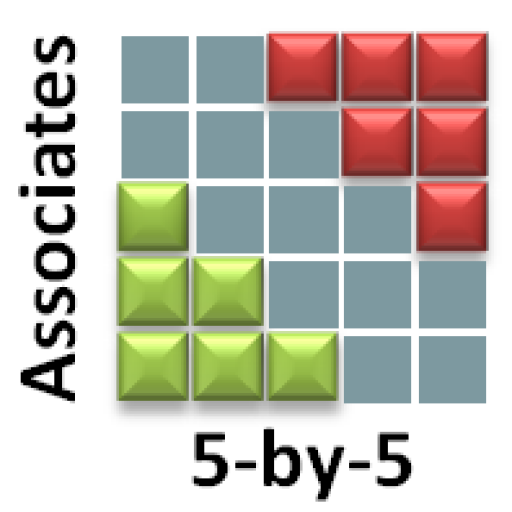It occurs to me that Thomas Edison’s mantra that “good fortune is what happens when opportunity meets with planning” has a corollary, which is as relevant to risk management as the original is to project management. Recognising that the flip side of opportunity is risk, it is perhaps the corollary: “Bad fortune is what happens when planning dodges risk” which is the more relevant marker for the type of severe downside uncertainty which can block an investment decision in an otherwise attractive proposition.
5 by 5 Associates Ltd has taken an independent look at how a number of recent projects, preparing for financial investment, have addressed risk and contingency management. Whilst the projects themselves need to remain confidential, we can identify some common themes among those which have enjoyed a smooth investment passage.
Theme 1: Start the Risk Register early
Most projects (or assets) have a risk register, and it is usually fairly clear whether the register is worked as a core aspect of the project management approach, or just to tick a due diligence box. Successful teams start early – a risk register which is proactively driven from an early stage acts as the roots of a tree, drawing on the expertise which can shape the project in a way which eliminates or avoids key risks. Where risks are identified late, the options are much more limited, and all too often it turns out that the benefits of hindsight could have been available from the outset.
Theme 2: The team owns risk quantification
Investment decisions are based on costs and benefits – both of which carry uncertainty. Investment governance will normally require that uncertainty is quantified. Techniques to quantify risk can range from Expected Value (EV) analysis (where the probable value of all risks are calculated and added together) to risk models of varying complexity, often using Monte Carlo simulation to combine probability distributions for the individual risks. Where decision makers require confidence levels (eg what cost overrun can we be 90% confident of coming within?), Monte Carlo techniques are generally considered best practice, but are only as good as the quality of judgement used to characterise the outcome of risk events. Projects which are on top of risk can point to clear assumptions for best, mid and worst case outcomes, with the judgements on risk values owned by the relevant technical leads.
With risks quantified, projects can decide whether to accept risks (with suitable contingency provisions) or to negotiate transfer to others, based on a good understanding of the value of the risk transfer. Successful projects also recognise the limitations of Monte Carlo techniques; for example the underpinning assumptions can break down under distressed conditions. Where there are substantial knock on delay risks between project elements and / or severe outcomes where contractual risk allocation may not work as planned, the Monte Carlo results for high confidence levels will be questionable. Given that, for investors and lenders, tolerability of downside risk is a key issue, scenario based methods are used to provide a better test of resilience and complement Monte Carlo techniques.
Them 3: Two tier contingency management
One way of dealing with the tolerability of downside scenarios is to split contingency into a planned element (under the control of the project team) and a reserve (requiring further approval from project sponsors or investors). If a risk model has been used to establish distribution curves for risk costs, then planned contingency is set at a specified confidence level (generally between 50% and 80%). Reserve contingency, which is not directly accessible to the project team, is based on plausible combination of a small number of extreme scenarios over and above planned contingency levels. As the project progresses and contingency is drawn upon, then the risk model can be periodically updated to determine the confidence level that the remaining contingency is adequate.
Projects which exhibit all of the above, with risk management embedded in the fabric of a team, weaving through technical, commercial and financial planning, give stakeholders confidence that bad fortune will be avoided. Effective risk documentation which provides quantified confidence levels (and an understanding of the tolerability of potential downsides) then becomes a hallmark of the well-crafted project.
